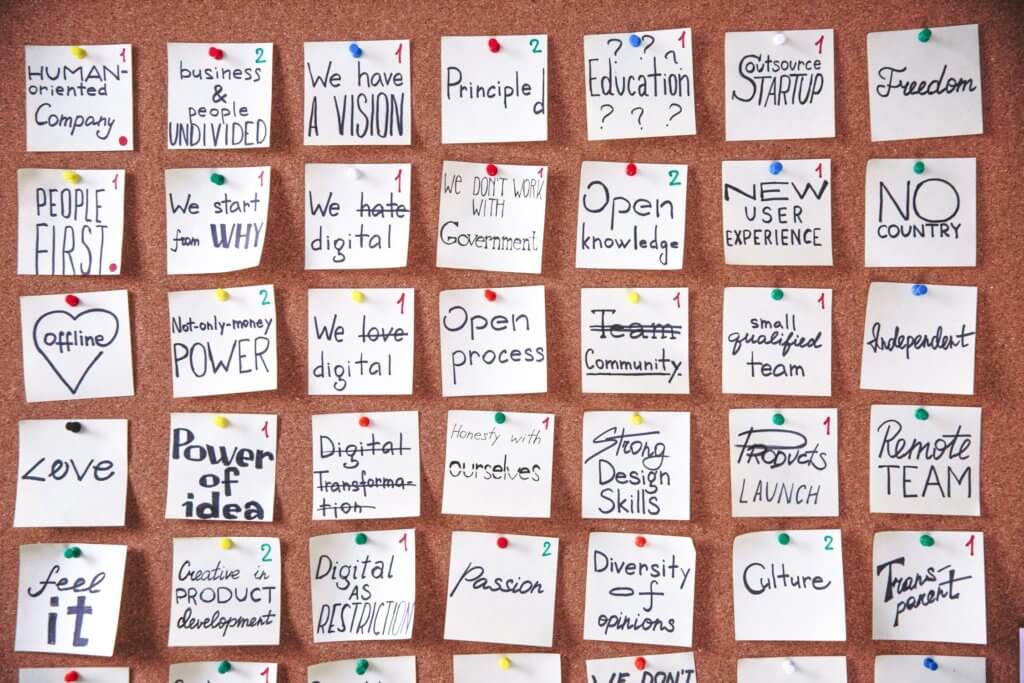How to be a great internal innovation champion
A critical factor for organisations wanting to create a more innovative culture is identifying and supporting an internal innovation champion or ‘catalyst’ to help drive the change they want to see.
Your internal innovation champion (or champions) can come from any part of the business. Whether they already have innovation-focused roles, or they’re somebody in marketing, HR, or operations with a passion for making change happen.
Wherever you sit day to day, becoming an internal innovation champion is a big and exciting undertaking. It has the potential to alter the mindsets and outcomes of the entire organisation.
But implementing new ways of thinking and working is a huge task, so what does it take to do this job well? What are the characteristics of a great innovation catalyst who can help embed design thinking throughout a business?
We’ve worked with amazing innovation champions in businesses, public sector organisations, and non-profits around the world. Here are six characteristics we’ve found are key to being most effective in the role.
Build a solid design thinking foundation
You’ve likely been chosen for this role because you already understand that there’s a need within the business for real, transformative change, and you’re keen to be at the forefront of making it happen.
To champion innovation, you need the knowledge, tools and confidence that comes from real life application of design thinking. And then you need to help your colleagues develop a strong understanding of design thinking too, so they can play their part in helping drive organisational change.
By undertaking expert-led training which also enables you to upskill others in design thinking tools and mindsets you’ll have everything you need to bring your colleagues with you on this journey, and achieve great results. Check out our suite of design thinking and innovation training options.

Demonstrate the impact design thinking is making day-to-day
Great champions don’t wait for brand new products or services to be implemented to celebrate the difference design thinking is making to their business. This role is about celebrating on a regular basis the small but significant wins that innovation is helping you to achieve.
Be the one to point out to colleagues the time you’re saving by coming together to generate ideas in a brainstorm rather than sending emails back and forth for weeks. Share the feedback you received from a customer about your idea – good or bad – and celebrate the invaluable insight this gave you into what matters to them.
As innovation champion, it’s your job to showcase how design thinking is changing the way your team is working for the better, to encourage everybody to keep using it to make more great things happen.
Help everybody stay true to design thinking principles
When you’re driving big change in an organisation, you’re inevitably going to come up against barriers. It can be challenging to get colleagues responsible for policing long established systems to flex to let your innovation work happen.
As an innovation champion, you have an important role to play in demonstrating resilience in the face of resistance, and continuing to stay true to the philosophy you’ve signed up to.
You also need to make sure you hold people to account. Any kind of new approach is going to be tough at times, so you’ll need to remind your team what you’ve all agreed to do, and that leadership fully supports the approach you’re taking.
As is the nature of design thinking, you’re going to learn what works best for your organisation as you go. Let your team see that you’re adjusting the way you engage your customers and colleagues in the project, and how you apply different design thinking tools, and they’ll feel encouraged to do the same.

Communicate with empathy
Emotional intelligence is key to any design thinking project, and an especially important characteristic in an innovation champion.
To be successful in this position, you need to be able to communicate with and influence people at all levels of the business – whether you’re helping build understanding amongst colleagues outside of the innovation team about what you’re doing, reassuring fellow innovators that they’re on the right track, or updating leadership on your progress.
Using what you’ve learned about how to listen with empathy will also be key here, and help you understand more deeply not just what your colleagues are asking you for, but the motivations behind their request.
Taking people with you, demonstrating empathy, and showing resilience will help keep your project – and the business transformation you’re driving – moving forward.
Ask for what you need
To help the organisation achieve the kind of transformative change you’ve been appointed to help bring about, you need to feel empowered by those in charge.
It’s critical that you and your colleagues are given everything you need to be successful – from training and resources to ongoing support and buy-in for your work.
It’s vital that your leaders commit to enabling you to do the work you’ve been tasked with, and you can also help them help you by communicating regularly and letting them know when you identify a need. Whether it’s a skills gap, a barrier you’re struggling to overcome, or a need for greater engagement from particular parts of the organisation, make sure you speak up so they can support you.
Get excited about what you can achieve with innovation
Becoming a truly innovative business will involve significant change, and, as an internal innovation champion, it’s vital that you see that change as exciting rather than scary.
Showing that you’re not afraid to put forward truly creative ideas, however crazy they might sound and that you’re willing to share a rough sketch of a suggestion for feedback will empower others to do the same.
Great champions help remove fear from the process by showing the benefits that come from truly embracing it, and not being held back by old ways.
At Treehouse, we deliver hands-on, high-impact design thinking training programmes that help organisations build a lasting culture of innovation. Find out more and get in touch to schedule training for your team today.
